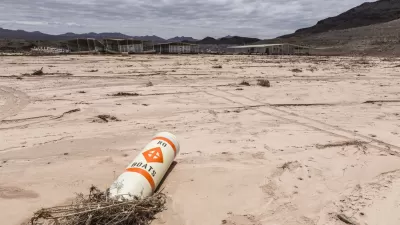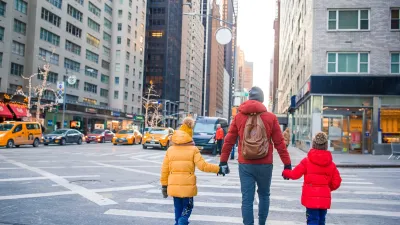The Seattle region would seem to have plenty of water to go around. That doesn't mean there aren't environmental consequences for more development.

"[E]ven in rainy, water-abundant Seattle, the region’s astronomical growth has given rise to new conflicts over water rights for people and salmon," according to an article and on-air report by Joshua McNichols.
The case study for the pressure between sprawl and water supply is set along the Snoqualmie River, found about 30 miles outside of Seattle and in the opening credits of the television show Twin Peaks. The city of Snoqualmie has been growing quickly, but upstream the city of North Bend, where Twin Peaks was mostly filmed, is stuck in the past due to a 1999 housing construction moratorium, implemented when the city got caught drawing more water than permitted from wells.
Now, developers have proposed a 212-unit development in North Bend, but "local environmental activists are demanding to know whether that building would put new strain on an already-overburdened waterway."
According to North Bend Mayor Ken Hearing, the development will bring workers, many of whom now commute from much farther south in King County, closer to North Bend's "struggling" commercial core. Mayor Hearing is also motivated to generate revenue from development that North Bend lacks, but other cities nearby have managed to collect on for years.
Jean Buckner represents the Friends of the Snoqualmie Trail and River, the environmental group opposing the apartment development. According to McNichols, "Buckner said she’s not against growth in North Bend. She just wants to see the city demonstrate that the river can withstand this new development."
FULL STORY: Water fuels Seattle’s growth. But in North Bend, activists say water could be running out

Trump Administration Could Effectively End Housing Voucher Program
Federal officials are eyeing major cuts to the Section 8 program that helps millions of low-income households pay rent.

Planetizen Federal Action Tracker
A weekly monitor of how Trump’s orders and actions are impacting planners and planning in America.

Ken Jennings Launches Transit Web Series
The Jeopardy champ wants you to ride public transit.

Crime Continues to Drop on Philly, San Francisco Transit Systems
SEPTA and BART both saw significant declines in violent crime in the first quarter of 2025.

How South LA Green Spaces Power Community Health and Hope
Green spaces like South L.A. Wetlands Park are helping South Los Angeles residents promote healthy lifestyles, build community, and advocate for improvements that reflect local needs in historically underserved neighborhoods.

Sacramento Plans ‘Quick-Build’ Road Safety Projects
The city wants to accelerate small-scale safety improvements that use low-cost equipment to make an impact at dangerous intersections.
Urban Design for Planners 1: Software Tools
This six-course series explores essential urban design concepts using open source software and equips planners with the tools they need to participate fully in the urban design process.
Planning for Universal Design
Learn the tools for implementing Universal Design in planning regulations.
Heyer Gruel & Associates PA
Ada County Highway District
Institute for Housing and Urban Development Studies (IHS)
City of Grandview
Harvard GSD Executive Education
Toledo-Lucas County Plan Commissions
Salt Lake City
NYU Wagner Graduate School of Public Service





























